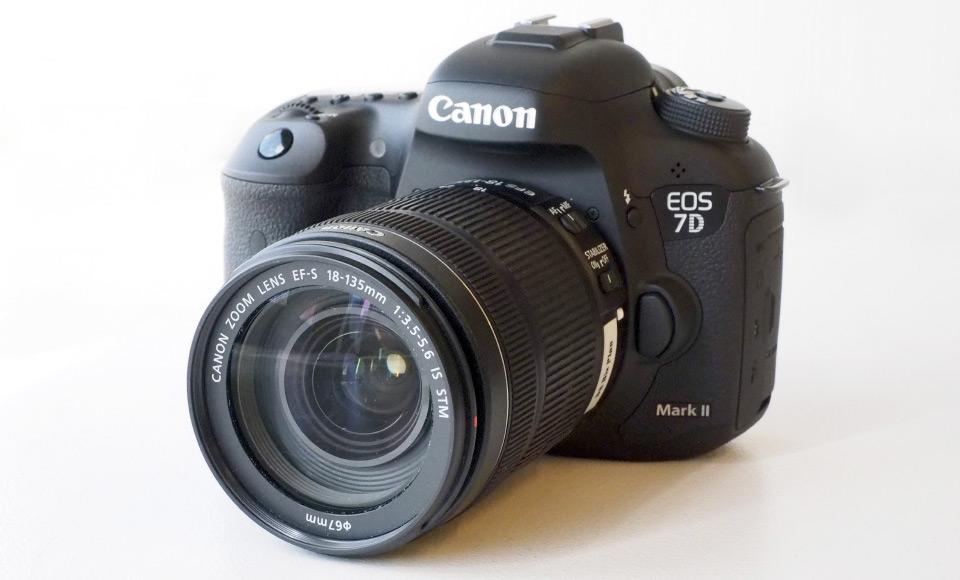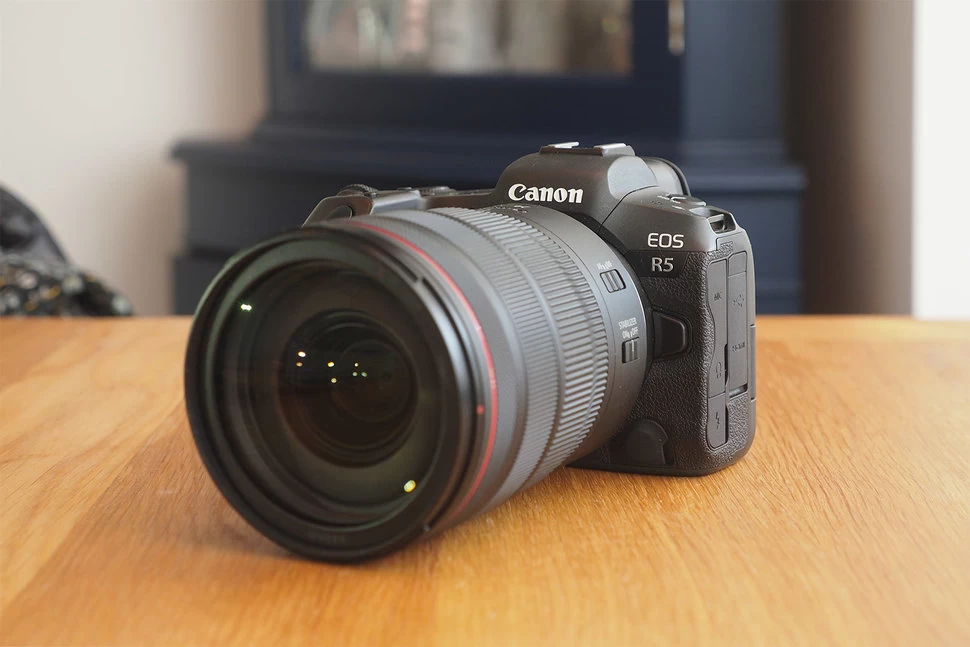Canon EOS 7D Mark II: The EF-S bayonet works with APS-C and full-frame lenses.
The Canon EOS 7D Mark II proves to be a fast DSLR with a particularly large number of autofocus points in the test. The equipment also makes a convincing impression overall but lacks modern extras like Wi-Fi. In addition, the EOS 7D Mark II, as the most expensive DSLR in the best list, can only score limited points in terms of image quality.
Pros
- Fast and unlimited JPEG continuous shooting
- Bright viewfinder
- Fast Live View autofocus
- Strong battery life
- 65 cross sensors
Cons
- Which do not work with all optics
- Hardly any modern extras
- Autofocus under low light
- Little lucrative for owners of the EOS 70D
The Canon EOS 7D Mark II is a bit surprising: Almost every DSLR manufacturer pumps their new launches with countless extras to counteract the increasing competition from the DSLM range. However, the successor to the almost five-year-old EOS 7D does without many modern conveniences: WLAN, NFC, folding display and touchscreen are all non-issues for the Canon EOS 7D Mark II. Only the GPS module for location storage is worth mentioning here. Meanwhile, the DSLR almost focuses on one topic: speed. With up to 9.5 frames per second, the camera can secure the title as the fastest classic DSLR in the best list. Also top: In full JPEG resolution, the continuous shooting does not stop until the double card slot for SD and CF-I cards is full. Only with RAW files does the recording stutter after 28 pictures.
Canon EOS 7D Mark II: Fast in the test
The Live View mode of the Canon EOS 7D Mark II is also surprisingly fast. The contrast autofocus only needs 0.6 seconds. This is a fast value for a DSLR, especially since the first EOS 7D still needs 3.44 seconds for this. The automatic focusing using the bright and clear 100 percent viewfinder also proves to be fast with a shutter release delay of 0.4 seconds, at least in daylight. Under low light, the camera just about achieves its snapshot suitability with 0.56 seconds. The subordinate sister model EOS 70D, for example, can do that better.
Canon EOS 7D Mark II: New sensor hardly noticeable
As another change, Canon’s EOS 7D Mark II comes with a new image sensor. At least according to the manufacturer, it is not supposed to be the same chip from the EOS 70D despite the same APS-C size and resolution of 20 megapixels. However, the improvements are limited. The noise is a bit better. However, it is quite possible that this is due to the newer DIGIC 6 image processor. The manufacturer uses the slightly better noise behavior as an opportunity to increase the maximum light sensitivity up to ISO 51,200. A good step? Only conditionally. Because disturbing noise is already visible from ISO 1,600 in the 100 percent view and details visibly fade. This is an astonishingly weak result for a camera in this price range. Nevertheless, ISO 12,800 still seems acceptable for A3-sized prints.
The battery life only reaches half of the fantastic 70D performance with a maximum of 1,930 shutter releases – but is still one of the most enduring DSLRs. In addition, the video runtime has improved a bit with 136 minutes. This is surprising, especially since the DSLR now offers twice the frame rate at Full HD resolution with 60 frames per second. Headphone, micro, and flash sync cable connections are also located on the casing.
In any case, the Canon EOS 7D Mark II leaves a very high-quality impression on the outside. The casing is made of magnesium and is sealed against dust and splash water. The numerous direct buttons for ISO, exposure bracketing, and the two jog wheels also quickly give the high-quality feeling of the EOS 5D Mark III. In contrast to its full-frame sister, the Canon EOS 7D Mark II has an integrated folding flash with guide number eleven, which can even remotely control external Speedlite system flashes.

Canon EOS 7D Mark II: 65 cross sensors with fine print
But probably the most important component of the Canon EOS 7D Mark II is the 65 autofocus fields. Almost revolutionary here: all fields function as a precise cross sensor. The catch? Not all cross-type sensors work with every lens. Mainly full-frame lenses and only a few APS-C lenses meet the requirements to illuminate the edges brightly enough. You can find out which lenses these are on page 32 of the autofocus guide, which you can download from us as a PDF. However, the Japanese do not mention the situation with third-party lenses.
But apart from that: Except for sports and concert photographers, only very few will ever need all 65 cross-type sensors. If you can do without them, the Canon EOS 70D is much cheaper and you’d better invest the money you save in sharp glass. We have also tested the best Canon lenses for you.







